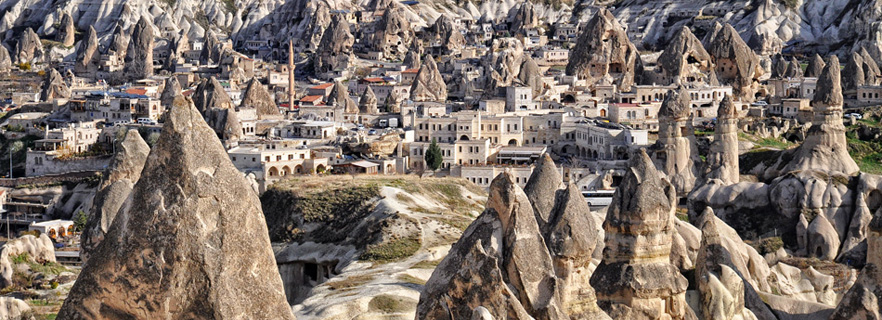Iconoclastic And Pre-Iconoclastic Periods In Cappadocia,
This is the first phase in the development of the rock churches of Cappadocia. It begins from the 5th century and ends at the beginning of the 9th century. 15% of the existing churches belong to this group. In fact, there were more but since the older churches have been more affected by erosion, most of them are totally destroyed. For the same reason, it’s hard to make a reliable distinction among them because nearly all of them are of the same type, and surviving frescoes are in bad condition.
We can divide this period into two:
1 —Early Christians (before the 7th century) and.
2 — Proto-Byzantine (after the 7th century). We should further classify the Proto-Byzantine age as Pre-Iconoclastic and Post-Iconoclastic because the number of frescoes is larger. But it is quite possible that any frescoes of this period may belong to the Iconoclastic Period at the same time. On the other hand, the simple red decorations observed in some of the churches do not necessarily belong to the Iconoclastic Period because the early painters got inspiration from the early Christian symbolism. The fishes hanging from the side of the green-colored cross in the Ozumlb Church in Zelve represent the faithful. In fact, the Cappadocian communities had a special respect for the cross, and they believed that every cross represented the True Cross in Jerusalem. It was an Iconographic tradition in Cappadocia to paint or carve large crosses on the ceilings of the churches. This tradition continued till the 10th century.
After the Iconoclastic Crisis, a new painting style was introduced. Instead of old symbolic figures, great emphasis was given to the events and liveliness of the scenes; large crosses and decorative painting rapidly disappeared. The church in Zelve can be assigned to the Iconoclastic period depending on its decorations which consist of nothing but crosses. The same thing can be argued about Hach Kilise in Kizilcukur. The Iconoclastic, idea brought a duality among the monks of Cappadocia. We can see decorations of both ideas in the Cappadocia region in Turkey.




































































































































